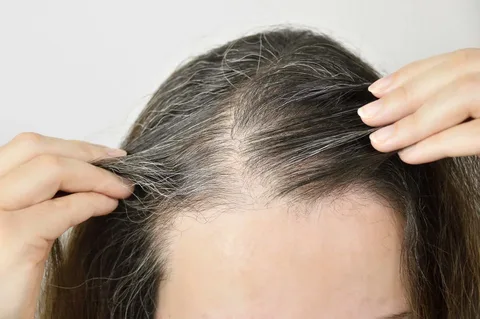Experiencing hair loss can be unsettling. However, it is important to recognize that losing a certain amount of hair each day is completely normal. On average, individuals shed approximately 50 to 100 hair strands daily, which is a natural aspect of the hair growth cycle. Concerns arise when hair loss exceeds this range or when bald patches become noticeable.
In this article, we will discuss the nature of hair loss, its causes, what constitutes a normal amount of shedding, and when it may be necessary to consult a healthcare professional.
Understanding Hair Loss
The growth of hair follows a cyclical pattern, with each hair going through phases of development, rest, and eventual shedding. Typically, when a hair falls out, it is replaced by a new strand, and this process continues consistently over a person’s life.
However, there are times when this cycle may be interrupted. Hair may cease to grow or may shed at an accelerated rate, leading to concerns about hair loss.
Numerous factors can contribute to hair loss, with some being temporary and others more permanent. Let us explore the various causes of this condition.
Common Causes of Hair Loss
- Stress: Physical or emotional stress can lead to hair shedding. It usually shows up a few months after a stressful event.
- Hormonal Changes: Pregnancy, menopause, or thyroid issues can affect hair growth.
- Poor Diet: Lack of protein, iron, or vitamins may lead to weak hair and hair loss.
- Genetics: If hair loss runs in your family, you may experience it too.
- Medical Conditions: Diseases like alopecia areata, scalp infections, or certain medications can also cause hair to fall out.
Some people also explore treatments like Celluma LED Therapy to support hair regrowth. This non-invasive therapy uses low-level light to stimulate the scalp and improve blood flow. It helps create a healthy environment for hair to grow again.
What’s Normal Hair Loss?
As mentioned, losing 50 to 100 hairs a day is completely normal. You may find strands on your pillow, in the shower, or on your brush. It becomes a problem when:
- You notice hair thinning quickly
- Your hairline is receding
- Bald patches appear
- You lose handfuls of hair at once
These are signs that something is not right.
When Should You Be Concerned?
If hair loss is sudden, severe, or only happening in certain spots, it’s best to talk to a doctor. These may be signs of an underlying health condition.
Other warning signs include:
- Itching or redness on the scalp
- Pain or burning in certain areas
- Hair loss after taking new medicine
- Losing eyebrows or body hair too
The earlier you find the cause, the easier it is to treat the problem.
Types of Hair Loss
There are different kinds of hair loss. Knowing which one you have can help in choosing the right treatment.
- Androgenetic Alopecia
Also known as male or female pattern baldness. It’s the most common type and usually runs in families. Hair becomes thin on the top and sides of the head.
- Telogen Effluvium
This is when lots of hair enters the shedding phase. It can be caused by stress, illness, or surgery. It’s usually temporary.
- Alopecia Areata
This is an autoimmune disease. Your body attacks the hair roots. It can cause round bald spots on the scalp or body.
- Traction Alopecia
This happens when hair is pulled too tightly for long periods. Tight hairstyles like ponytails or braids can cause this type.
Tips to Prevent Hair Loss
While not all hair loss can be stopped, there are ways to care for your hair:
- Eat a balanced diet full of vitamins and minerals.
- Be gentle with your hair. Avoid harsh shampoos, heat, and tight hairstyles.
- Wash your hair regularly to keep the scalp clean.
- Manage stress with meditation, exercise, or hobbies.
- Stay hydrated. Water is important for healthy hair.
Talk to a doctor if you notice any unusual hair fall. There are many treatments available today. Some are medical, and others are natural or cosmetic. The sooner you act, the better your chances of recovery.
Final Thoughts
Hair loss is common and happens to almost everyone at some point. Some hair fall is completely normal. But when it becomes excessive or you notice other symptoms, don’t ignore it. Understanding the difference between regular shedding and real hair loss is key.
With the right care, diet, and treatments like Celluma LED Therapy, many people find ways to restore their hair health. Always talk to a healthcare provider before starting any new treatment.
Remember, your hair is a part of your health story. Listen to it. Care for it. And don’t wait too long to act if something feels off.


